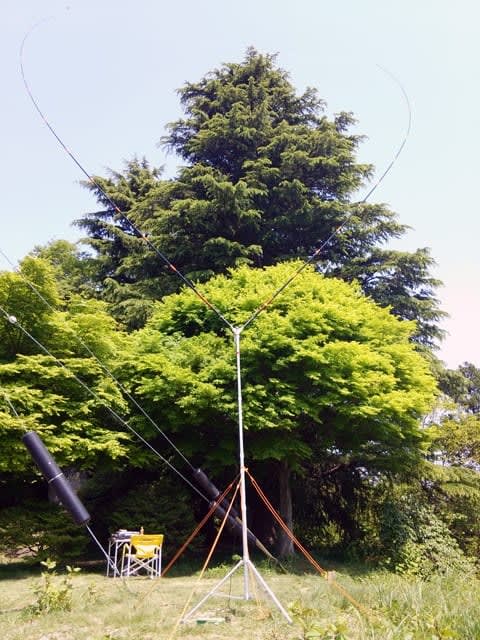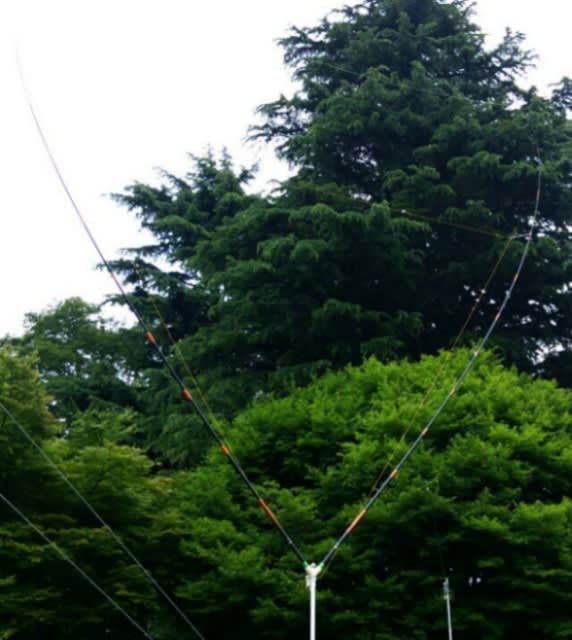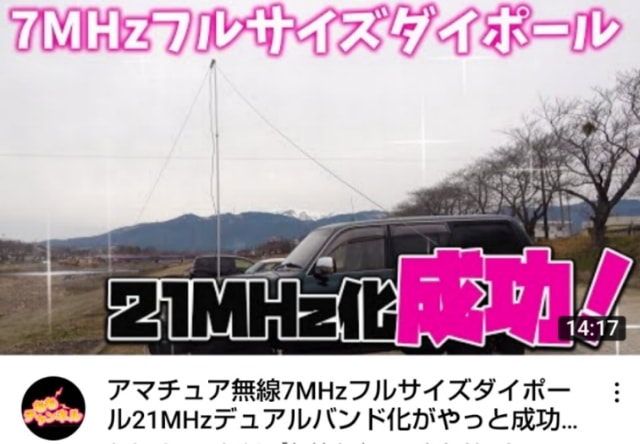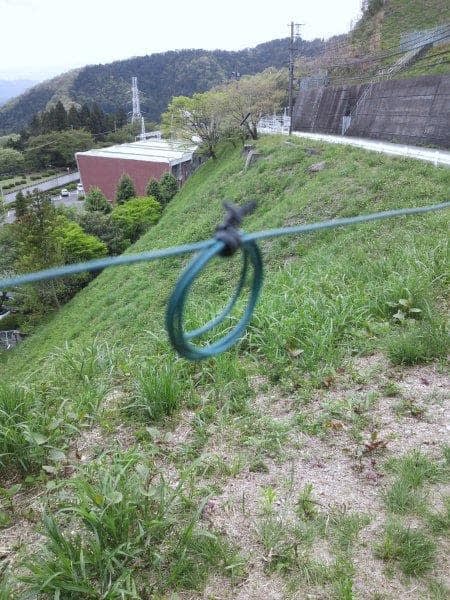Amateur radio club in elementary and junior high schools
In 2011, there were really various disasters all over Japan. It was also a year when the weaknesses of this highly information-oriented age were exposed. Cell phones were almost useless in emergencies, and although the Internet and e-mail were reasonably strong, it was only because of the efforts of the shadows who were desperately trying to switch the available lines. The importance of a battery-powered radio was reevaluated. But information is a one-way street.
As a two-way communication method, what can be used in times of disaster is "radio communication with its own radio waves. Cell phones are also a form of wireless communication, but they are merely a terminal because they are connected to the infrastructure of another power. If the infrastructure is broken, nothing can be communicated. If the infrastructure is broken, nothing can be communicated. The number of lines is limited, and if the lines are crowded, calls cannot be made even if the infrastructure is not broken.
If your own signal reaches the other party, communication is established. If sound is delivered, voice communication is possible, and if light is delivered, light communication is possible. In the same way, if radio waves are delivered, we can communicate wirelessly.
There are few ordinary people who are allowed to communicate by radio waves on their own. Radio waves are controlled by the government, so you can't send them out without permission. However, there is one radio that the general public is allowed to use for their own interest and training.
That is "amateur radio.
Radio waves are also a precious resource, so this is really a "special permission", but the world of radio waves has always been opened up by amateurs, and amateur radio has a high status in this world, and is internationally protected and respected (although it is often troubled by broadcasts from countries that do not follow international rules, and by radio waves for military purposes). It's an internationally protected radio. It is commonly used all over the world.
Amateur radio requires two licenses, one for the individual, the "Amateur Radio Engineer License", and the other for the radio equipment, the "Radio Station License". However, in the Radio Law, there is a clause that says that instead of letting people use the radio for fun, they should contribute to society by making "emergency communications" in times of disaster or when other means of communication such as wires are not available. All the laws are made to fulfill the purpose of "promotion of public welfare", that is, "everyone is happy", so the Radio Law also makes amateur radio stations contribute not only to themselves but also to society, so that everyone is happy.
Therefore, the use of Amateur Radio as a means of communication in times of disaster is allowed when other means of communication are not available, or rather, we are told to be proactive and show our volunteer spirit. (To put it bluntly, setting up an amateur station for emergency communication is not allowed because it is not for the purpose. (To put it bluntly, opening an amateur station for emergency communication is not allowed because it is not the purpose of the station. If you are not interested in radio, you should not set up a station for communication or in case of disaster. (However, this is a vague definition, so anyone can open a radio station with any real intention.)
The most common news I heard this year was, "Fat people have evacuated to Fat Elementary School, but we still can't contact them. I guess they don't have telephone or electricity.
I guess there is no phone service or electricity. Cell phone base stations were also down. If it's a typhoon, we can't even check from a helicopter.
There is no communication at all. In this day and age. This has happened many times this year, here and there.
Because we only have advanced means of communication, we are vulnerable to the opposite.
What would have happened if that school had an amateur radio club?
The power supply is a problem, but if the school has a mobile operation, the batteries are probably charged on a regular basis. It is possible to operate for a while. It can also be operated with batteries. If you have a generator, you can communicate as long as there is fuel. If you have a power supply from your car, you can communicate as long as your car has fuel. If you don't need a strong signal, a small solar panel and a rechargeable battery will be enough.
Schools need to have amateur radio equipment.
It would be nice to have an amateur radio club.
If you have equipment that can operate in the shortwave band, you can contact people all over the country. This is surprisingly important.
In the Great East Japan Earthquake, the entire region was extensively damaged, and there was no way to get information from the surrounding areas or from each other. The next door neighbor was also a disaster area. There was no way to find them except by foot. There is no electricity and no means of communication in the area, so it is impossible to know what is going on in the whole of Japan from the field.
What can be done in such a situation is to support the transmission and relay of information by areas outside the disaster area where the infrastructure is fully functional.
At that time, the personfinder system for safety confirmation was very active on the Internet. Many people in the non-affected areas volunteered to read the letters from the photos in the list of evacuation centers and manually input them into the system. This is an example of people from areas with living infrastructure supporting the disaster area from afar. (It all started when one person first started taking pictures of the list of evacuation centers with his cell phone and uploading them to the Internet.) ) Since government agencies are too busy to do such work in times of disaster, each and every Net user across the country showed their volunteer spirit and voluntarily participated in the creation of the Person Finder list.
At that time, it was almost always possible to communicate with the affected areas through the shortwave band using amateur radio. There were many stations that contributed to the communication. In particular, stations in the Kansai region worked diligently, and later collaborated with Tokyo and other cities to operate in accordance with the changing radio wave conditions at different times of the day.
Although there were still some issues to be resolved, I think it was very worthy of recognition. (Not that it matters, but there is a way to memorize the Japanese telegraphic character "o" by combining the words "toto toto" and "omo kokoro". Let's take this opportunity to memorize one character.)
I can't hear it here in Tokyo, but I'm sure it was very active on the 144 MHz band in the area.
So, it would be very reassuring if schools, which could be evacuation centers, had amateur radio clubs and practiced emergency operations.
Nowadays, people say, "Why use a radio when we have cell phones? However, the purpose of amateur radio is not to be able to talk, but to be able to receive radio waves and communicate, and to enjoy the hobby of self-powered communication itself.
Cell phones can't connect in times of disaster, but amateur radio can. And the world. There is a big difference in these situations.
Now, it is true that having an amateur radio club at school is a good thing, but there is a big challenge in establishing and maintaining it.
In order to establish and maintain a club station, it is necessary to have a licensed radio amateur at all times. In a school where students (and teachers?) change every year. In schools where students (and teachers?) change from year to year, this is a challenge. The exam is not difficult, but you can't force people who are not interested to take it. It used to be that some of the boys who were interested in radio and electronics took up amateur radio, and there were usually a few in the school year, but now the troll net of video games and computers has swept away all the boys, and almost no one gets into amateur radio anymore. Also, there were many people who got into amateur radio because it seemed convenient, but now that we have cell phones, almost no one has that motivation. Talking to strangers all over the world, which was once considered a wonderful thing, now has a bad image due to internet crimes, and parents are wary of it. As a result, clubs have been disappearing from schools. When I was young and started radio, there was a radio club in a famous girls' high school, and it was very popular in the radio world, as valuable as communication with the Showa Station in Antarctica. But I think I have a solution.
But I think there is a solution. (This is just a rant from here.)
At the time of the Great East Japan Earthquake, JARL collected radios for the disaster area from many individuals, and assigned a call sign to each device to be used by communication supporters in the disaster area. The call signs were given to each piece of equipment and sent to the communication supporters (radio amateurs who support the communication as volunteers). Originally, a call sign was given to the user and the machine as a set, but this way, the call sign was limited to this person and this radio, which was inconvenient. At this time, JARL itself became the licensee and made it available to anyone who supported communications. 8J A total of 300 radios were sent to the area by quickly assigning call signs starting with 1.
http://www.jarl.or.jp/Eastern_Japan_earthquake.htm
This was a good idea.
In the same way, JARL will act as a licensee to open and maintain radio facilities in elementary and junior high schools for those schools that wish to use them. The local JARL members and local amateur radio clubs could support the operation. This would make it possible to open a station for a long time, if not permanently. Even if none of the students have a license at one time, we can continue with the help of the local community.
Radio equipment and antennas would be provided by local radio operators. Elementary school students are taught to run away if approached by a stranger. Even if they live in the neighborhood, they are treated as suspicious if an adult steps into their school. It is precisely in times like these that we need to deepen the ties between the community and the school. Wouldn't it be nice to have a neighborhood radio guy come to the school radio club once in a while and teach the students how to communicate and build antennas?
Wouldn't it be great to have such an idea? I'd like to help with that.
On a different note, amateur radio stations with big antennas are not suspicious, but they are the most reliable means of communication in case of emergency. Amateur radio cars with big antennas are actually the best all-in-one radio stations for disasters, and they can contribute to society the most.
And yet, citizens call 110 to report suspicious cars parked in the area, and the police even stop the cars in motion to question them. I'm going to go to the police first, so can you give me a registration sticker after you check it out? A sticker that doesn't question people when they see the antenna. (laughs)
There is one bright news. I heard that the number of people trying to get an amateur radio license is increasing this year. The main reason for this is disasters such as earthquakes, tsunamis and typhoons. This is probably due to the experience of having no means of communication. Another factor may be the increase in the number of people hiking in the mountains. There is no cell phone connection in the mountains. What's different from your original interest in radio? But if it's fun to try, I'd like people to enjoy it, and I think it's good to have various opportunities, so I'd like many people to get their licenses.
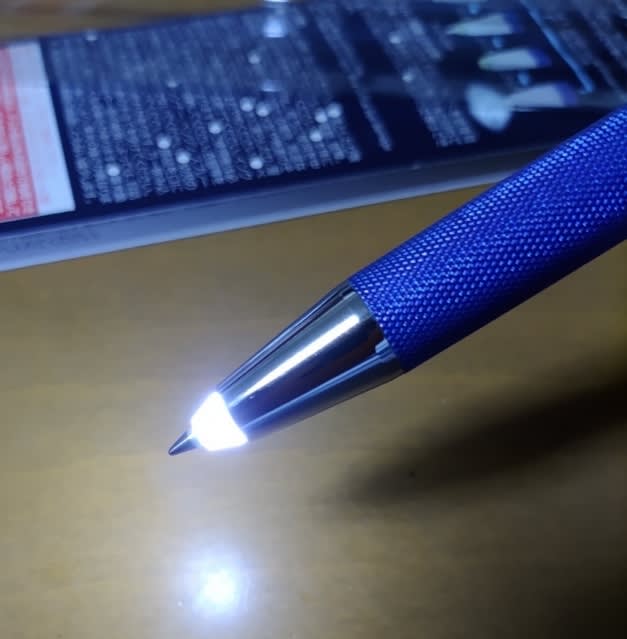
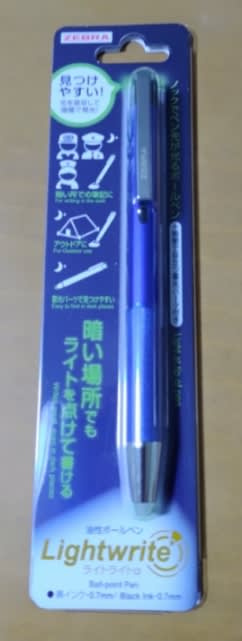
関東UHFコンテストは自宅から。
少しだけ参加しました。
1200MHzと430MHz。
1200MHzは聞こえる局は呼んで、CQ出さず。
開始して少し経った頃と、終了間際だけ。
ちょっと顔を出しただけです。
1200のいいところは、移動局は1W、固定局が出しても10Wというところ。全員がね。
どのコンテストも10W制限でやったらいいのになぁ。と考えさせられます。
430はと言うとこのような賑わいです。

関東地方の430は凄いでしょ。コンテスト時は山の上からだと出るところが見つかりませんから。
スケートは加速技術、スキーは減速技術。
なのでやることは逆。
滑るものの上にエッジで立っているから、前に進みたくても足を前後に動かしてもその場で滑ってしまい進みません。(少し進むけど)
どうやって進むかというと、横揺れ(横方向のベクトル)を斜めに開いたエッジで受けて、エッジの方向に進むことで前に進みます。
両足のエッジを少し前が広くなるように構えて、ただ横に揺れて、右足、左足、に交互に乗ればいいのです。
まず、エッジを開かずに平行に立って、両手を広げて右~、左~と傾きながら右足、左足に交互に乗ってみます。
片足になるべく長く乗っていられるように、右~~~、左~~~と出来ると良いです。
次に、前が開くように足を構え(ガニ股気味に)、同じことをやってみましょう。
はい、滑れましたね。
前に進もうとせず、横に揺れていれば良いのです。
進みながら、片足に乗る時間を長くしていけば上級者に見えます。
そうそう、足元を見ないで。
前の人の頭を見るくらいの視線を保ちましょう。そうすることでどんどん上手くなります。
さて、いつかできるようになりたい後ろ向きの滑り。どうしたら出来るでしょう。
簡単です。
前閉じのハの字に構え(内股ぎみ)、左右に揺れればいいのです。最初は足踏みでもいいです。
出来ましたか。
スケート楽しんでみてくださいね。
スパッと止まりたい人は、アイスホッケーの靴を買ってみましょう。すぐ出来るようになりますよ。
貸靴ではとてもむずかしいです。インエッジ側に折れてしまっている靴なので、横ずれ出来ませんから。
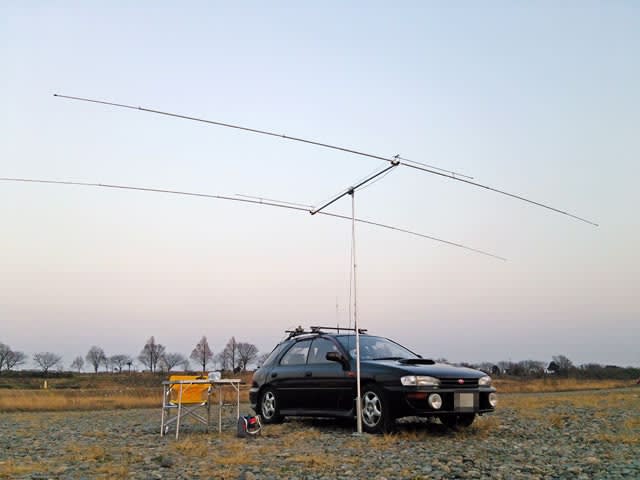

これに負けず劣らずが21MHzの3エレ八木。
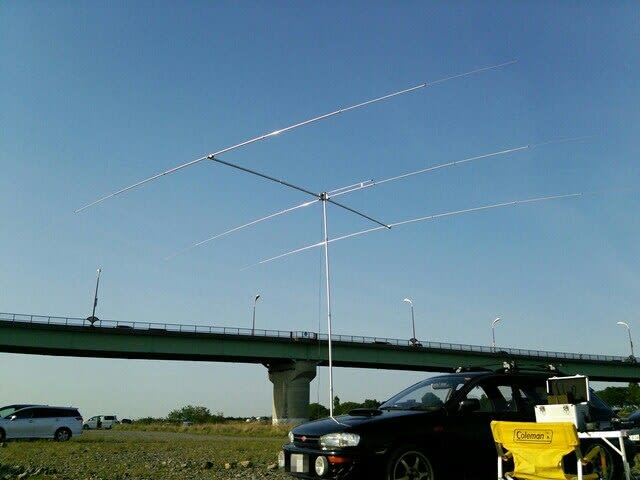
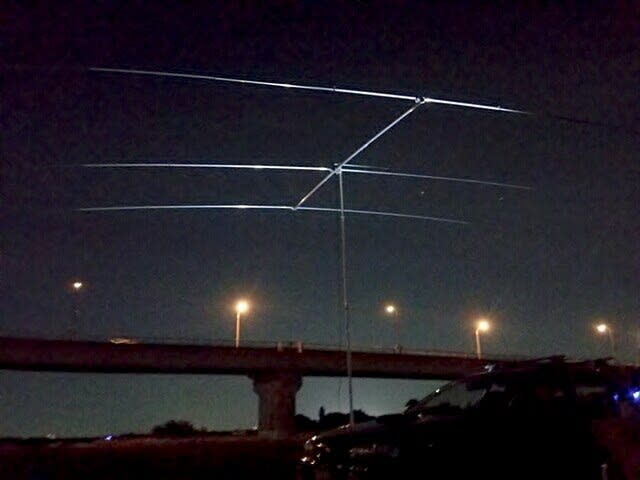
ついでに大好きなヘックスビームも登場してもらいましょう。
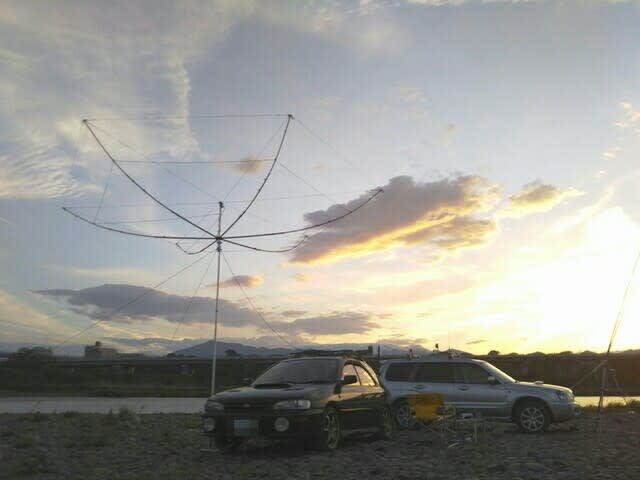
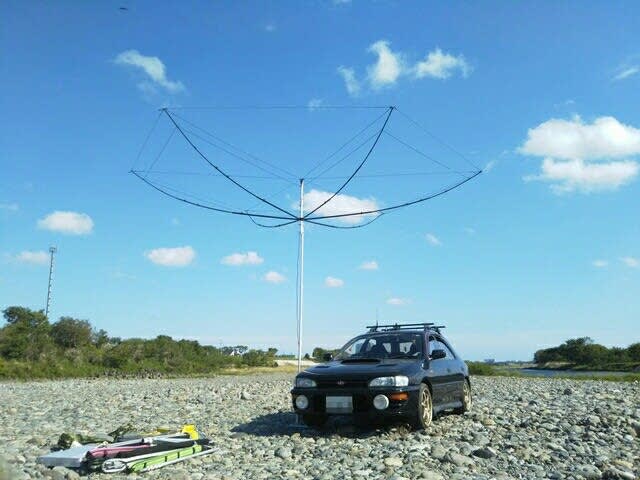
場所はみんな同じ、神奈川県座間市、相模川の座架依橋下です。
